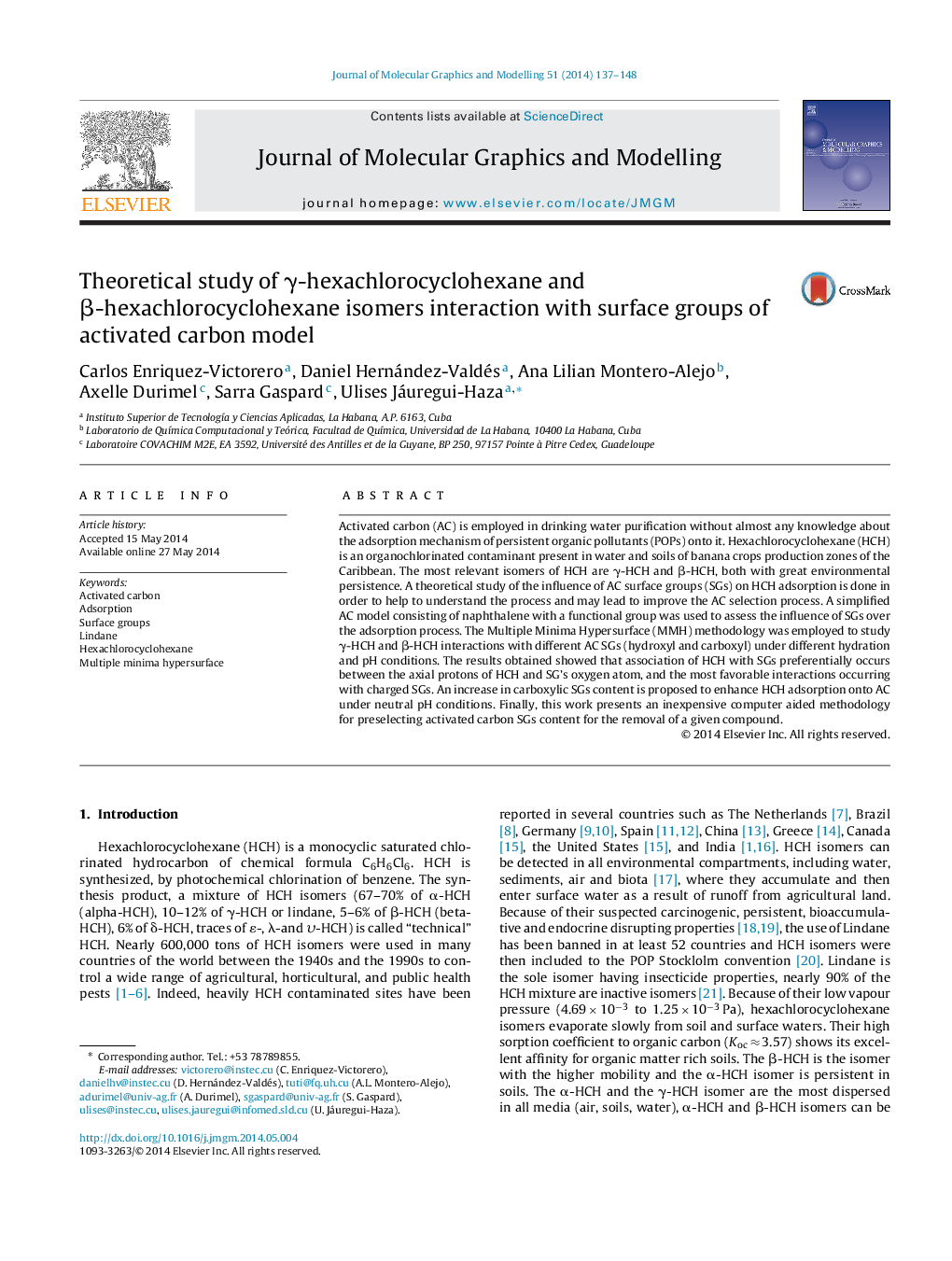| کد مقاله | کد نشریه | سال انتشار | مقاله انگلیسی | نسخه تمام متن |
|---|---|---|---|---|
| 444257 | 692951 | 2014 | 12 صفحه PDF | دانلود رایگان |

• Modeling of pesticides/activated carbon (AC) surface groups (SGs) interactions.
• A modified MMH methodology helps to explain the AC–SGs adsorption properties.
• Charged SGs enhance the adsorption of γ- and β-hexachlorocyclohexane isomers on AC.
• Interaction potential energy surface (PES) models improve surface chemistry of AC.
Activated carbon (AC) is employed in drinking water purification without almost any knowledge about the adsorption mechanism of persistent organic pollutants (POPs) onto it. Hexachlorocyclohexane (HCH) is an organochlorinated contaminant present in water and soils of banana crops production zones of the Caribbean. The most relevant isomers of HCH are γ-HCH and β-HCH, both with great environmental persistence. A theoretical study of the influence of AC surface groups (SGs) on HCH adsorption is done in order to help to understand the process and may lead to improve the AC selection process. A simplified AC model consisting of naphthalene with a functional group was used to assess the influence of SGs over the adsorption process. The Multiple Minima Hypersurface (MMH) methodology was employed to study γ-HCH and β-HCH interactions with different AC SGs (hydroxyl and carboxyl) under different hydration and pH conditions. The results obtained showed that association of HCH with SGs preferentially occurs between the axial protons of HCH and SG's oxygen atom, and the most favorable interactions occurring with charged SGs. An increase in carboxylic SGs content is proposed to enhance HCH adsorption onto AC under neutral pH conditions. Finally, this work presents an inexpensive computer aided methodology for preselecting activated carbon SGs content for the removal of a given compound.
Figure optionsDownload high-quality image (163 K)Download as PowerPoint slide
Journal: Journal of Molecular Graphics and Modelling - Volume 51, June 2014, Pages 137–148